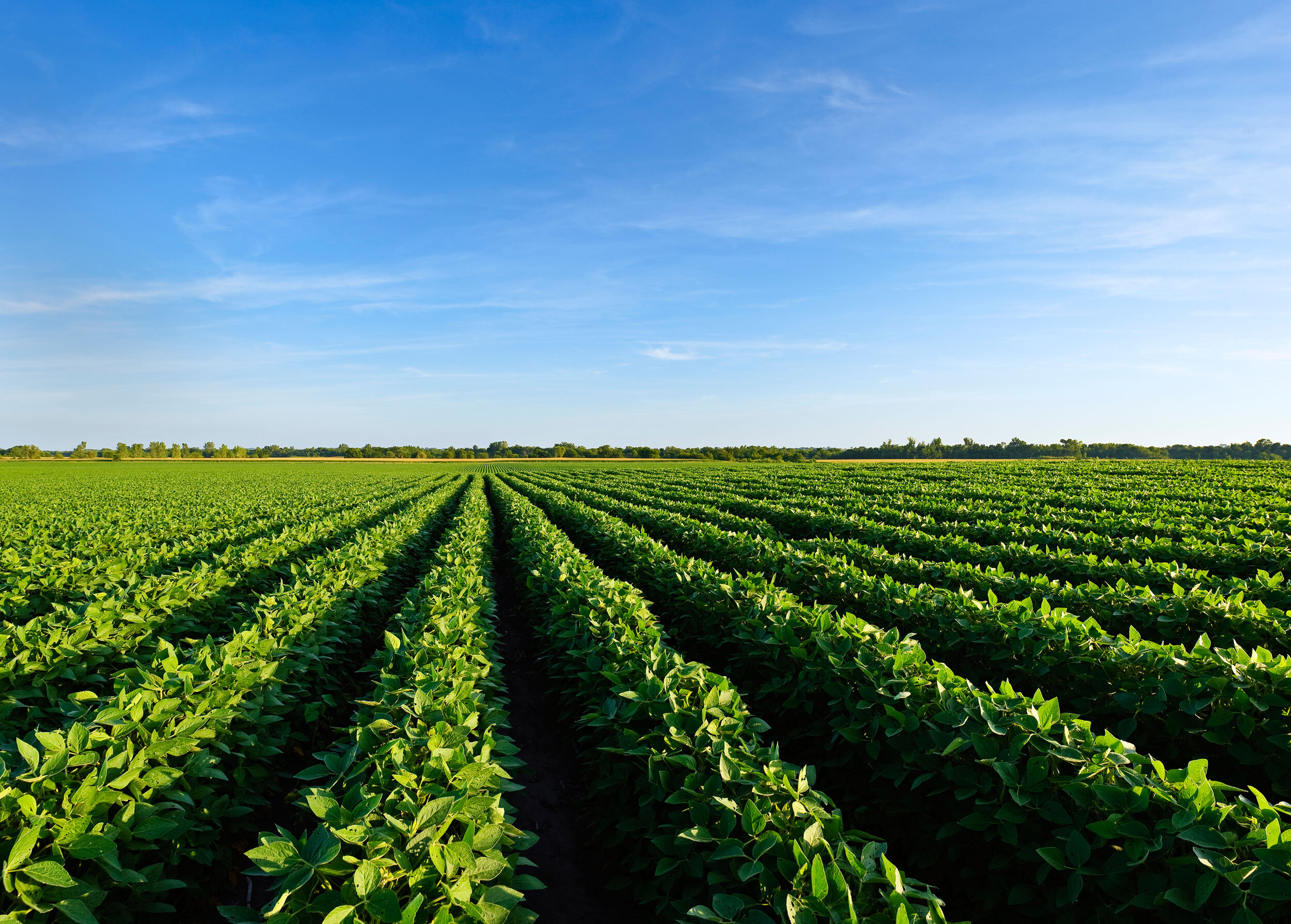Transforming the Agricultural Investment Space
In an era of soaring farm debt, alarming rates of soil fertility loss, and increasing climate extremes, organic agriculture offers an opportunity for greater farmer profitability and soil health, and a path to climate resilience. But while the demand for organic in the US is only growing, production is lagging far behind. Organic products currently account for 6% of farm sales but only 1% of agricultural production in the US. So why aren’t more farmers going organic? Organic agriculture constitutes a distinct approach that eliminates synthetic chemicals and fertilizers and employs different practices than standard conventional systems and requires a comprehensive management style. It can be complicated, and it begins with the transition period.
The three year transition period that is compulsory for operations to qualify for organic certification is an understandably formidable prospect for most farmers. During this period growers face both depressed yields, and the inability to sell their crops at organic pricing, resulting in a two fold hit to their bottom line. The yield depression through transition is due in part to a learning curve for farmers, but also because without the application of synthetic inputs, growers must now rely solely on the soil to provide all the necessary components for plant growth. Soil health is paramount in organic systems, but it takes time and active management to build up a robust soil ecosystem that can support crop nutrition and growth, especially when transitioning from a chemically intensive system that can strip the soil of its nutrients and structure. For these reasons the transition process can be daunting, and for farmers who do not take on this process incrementally it can become a 36-month financial J-curve.
While the reduced profitability and increased risk are deterrents, it is even more daunting if farmers do not own their land. Traditional land investment arrangements are usually based on annual cash-rent contracts. These arrangements offer little flexibility in unprosperous times, and inhibit farmers from taking a novel or even long-term approach to their farming systems since if they can’t afford rent one year, they will likely lose access to their land. This is in fact the case for most farmers in the US, since 54% of cropland in the US is rented and many farmers operate with short term (one or two year) leases. These arrangements make farmers relatively risk averse and less inclined to adopt new practices let alone an entirely new farming system.
Row crop investment platforms enable the private financial sector to invest in a diverse farmland portfolio. And similar to in other forms of passive farmland ownership, these platforms lease the land to farmers to operate. But while there are a number of row crop investment platforms out there, very few of them incorporate environmental and social impact as core elements of their investment strategy, meaning farmers are still at risk of losing their land if they take on the short term risk of adopting new practices. The question then becomes, how can we support farmers through this J curve to make changes that in the long run will benefit their bottom lines, their local communities and the environment, while contributing to a more resilient food system for everyone?
At Clear Frontier, we are willing to share risk and burden of transition alongside growers wanting to change their systems to a healthier, more environmentally friendly and ultimately more profitable farming system. We take a partnership approach by offering flexible more aligned longer term leases and full transition support. We recognize that each farm is different so we tailor our services to each grower, giving them the ability to plan multiple years out and treat the land as if it were their own asset. We have partnered with agronomists, technical experts and AgTech leaders who can provide tailored advice to our farmers to guide them through the transition process and in their organic farming journey. Our goal is to offer farmers the opportunity, flexibility and bandwidth to look beyond year to year profits and focus on land stewardship and long term viability.
The Missing Pieces of Traditional Agricultural Investment
Accounting for Grower Livelihood – Creating partnerships
For a sector that provides such an essential service, farmers in the US have been struggling to make ends meet for years. More than half of all farmers have lost money every year since 2013. Between 2013 and 2018 farmers experienced a nearly 50% drop in net farm income as the prices for corn, wheat, beef, dairy and other farm products crashed.
In 2019, farm debt hit an all time high at $219 billion. Farm bankruptcies also jumped by 20% from 2018 to 2019, the highest count since 2011. The only reason farmers fared better in 2020 is because the government paid nearly 40% of farm income.
There are a number of factors responsible for these numbers, including low commodity costs, high input costs, increased land values, increased cash rents, labor costs, and high barriers to entry. But these trends show no sign of reversing and are not only difficult, but increasingly tragic for many farm families and communities. According to the CDC, farmers and ranchers commit suicide at nearly three times the national average and suicide rates have increased by 40% in less than two decades. With this kind of outlook it’s no wonder the average age of farmers in the US is 58--how can we convince a new generation to enter the agricultural industry when profitability and stability are so elusive?
This is where organic farming can provide a solution. A study conducted by Washington State University researchers and published by the Proceedings of the National Journal of Sciences found that organic farming is between 22 and 35 percent more profitable for farmers than conventional agriculture. Which is why we are willing to take a revenue share lease that is more aligned with our farming partners. This arrangement helps farmers weather the three years of transition when they might not be able to make cash rent payments and gives them the confidence that more than just a landowner, they have a partner invested in the future of their operations.
Managing for Environmental Impact
Climate change poses a threat to many resource based ecosystems, including agriculture. As a warming atmosphere intensifies droughts, heat waves, floods, wildfires and other extreme weather phenomena, it is not only causing devastating crop loss and harm to livestock but speeding up the rate of soil loss and land degradation. But agricultural production under conventional systems is a major contributor to the greenhouse gas problem, responsible for nearly 10% of all GHG emissions in the US. Additionally, chemically heavy farming techniques are degrading our soils rapidly. According to the FAO, if new approaches are not adopted soon, the global amount of arable land per person in 2050 will be a quarter of what it was in 1960. In the US, soil fertility loss due to salinization, acidification, erosion, and nutrient depletion is costing farmers more than half a billion dollars every year.
But agriculture is also emerging as a crucial piece of the solution. Organic agriculture has an opportunity to actively participate in mitigating climate change on two fronts: 1) through increasing carbon storage within the soil; and 2) eliminating the significant footprint of the production and use of synthetic chemicals & fertilizers. Soils have the potential to sequester significant volumes of carbon from the atmosphere with proper management. While the amount of carbon that soils can sequester and the permanence of this sequestration vary and are still being debated, existing evidence is significant enough to position agricultural soils as a key carbon drawdown solution. Additionally, compared to conventional agriculture, organic regulations prohibit the use of synthetic chemicals and fertilizers, and this elimination not only improves microbial soil health and biodiversity but is estimated to offer a global agricultural emission reduction potential of more than 20% of all agricultural emissions.
These two factors alone: soil carbon sequestration and emissions reductions through eliminating synthetic inputs, position organic agriculture as an important option in climate change mitigation.
In addition to sequestering carbon, reducing emissions and generally contributing positively to climate issues; organic practices have been shown to generate a more resilient farming system in extreme weather conditions (excess water or drought). The Rodale Institute’s Farming Systems Trial, the longest-running side-by-side 40 year comparison of organic and conventional grain cropping systems in North America, has found that organic yields can be up to 40% higher in times of drought, due to healthier soils with higher water holding capacity. As we continue to see more climate change-induced extreme weather events, the benefits of improved soil water retention, reduced erosion, increased soil organic matter and biodiversity give organic systems an advantage in the long-run.
We believe that the only farming systems that can sustainably guarantee nutrient dense food supply into an increasingly climate uncertain future are those that can withstand extreme weather events. That’s why we are empowering farmers to invest in their soils and the long term viability of their farming operations. Agriculture cannot play a leading role in mitigating the effects of climate change unless we shift the current paradigm to one that encourages farmers to adopt sustainable practices that will support their businesses and land into the future.
Igniting a Bold Change:
We want to see farmers thrive because we grew up on family farms and in farming communities and have spent the entirety of our careers engaged with these issues. Prior to joining forces at Clear Frontier, our team worked in sectors spanning the agricultural industry from farming and agronomy to farmland and supply chain investing so we have a deep understanding of the obstacles facing this industry and what it will take to reverse these trends. We wouldn’t be doing this if we didn’t wholeheartedly believe in the opportunity for farmers to be profitable while also stewarding the land.
Our mission is to help farmers see a bright future for their operations and for young people to view agriculture as a viable profession. The way we grow our food should not degrade the land, deplete the resources and undermine the individuals and communities that our food system is reliant upon. Clear Frontier was founded on the principle that by taking a different approach, land investment can provide a sustainable business model, one that ultimately benefits the environment, the investors, and the farmers themselves. It is time to invest in the future of agriculture.





